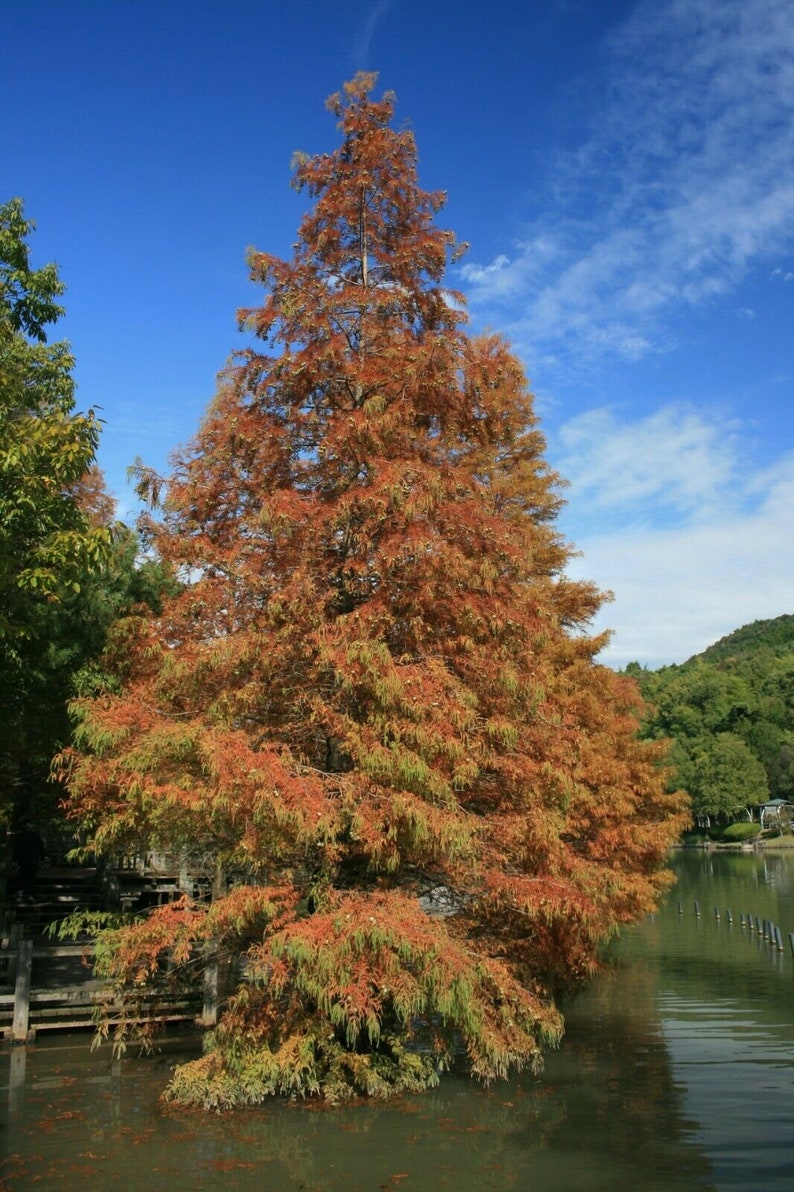

The most common exception is ‘Gold Rush’. Most dawn redwoods are the species types with green foliage and a towering growth habit. There are only a few, different selections of dawn redwood available to gardeners. The contrast of the bark colors and textures and tree shapes was stunning, especially in winter. I once saw a beautiful stand of dawn redwoods interplanted with river birch. Plant dawn redwood in open areas with native trees that like similar growth conditions. Because of their tolerance to pollution, they are good city trees, as long as they have enough root and top space. These large trees need room to grow to look their best. Plant dawn redwoods trees along a stream bed, the edge of woodlands, in a park or in a meadow. They only require pruning to remove dead, diseased or broken branches. Other than adding compost annually and mulching to maintain soil moisture, dawn redwoods require little fertilizer. The conical shaped tree grows quickly with adequate moisture and has few pests and diseases. Metasequoia glyptostroboides is a superb deciduous conifer, one of only a very small number of conifers that shed their leaves annually. Dawn redwoods grow best in slightly acidic soil and don’t like alkaline soil.ĭawn redwoods are care-free trees if grown in the proper location. Create a mulch ring around the base of young trees planted in lawns covered with bark mulch and wood chips to maintain soil moisture conditions and to help reduce damage to the trunk due to lawn mowers and string trimmers. It is related to and closely resembles bald cypress (Taxodium) and redwood (Sequoia Genus name comes from the Greek words metra meaning with, after, sharing, or changed in nature and Sequoia to which it is. Dawn redwoods don’t appreciate drought and can drop their foliage prematurely during dry conditions. Metasequoia glyptostroboides, commonly called dawn redwood, is a deciduous, coniferous tree that grows in a conical shape to 100’ tall. Keep trees well watered or grown in locations that stay moist all summer.
#Dawn redwood tree metasequoia glyptostroboides full#
Purchase trees from local nurseries and plant in spring to early fall in full sun on well-drained, humus-rich, consistently moist soils. The trunk flutes with age and has attractive orange and brown textured bark.ĭawn redwood trees are hardy in zones 4 to 8, offering a wide range of locations across the country to grow this beautiful specimen. The light green, finely cut foliage turns darker green in summer and golden colored in fall. However, because of its size, it needs plenty of room to spread.

Dawn redwood grow in wet, clay soils and tolerate air pollution, making it a good park tree in cities. Mature trees have the look of the giant sequoia, but are hardier. Like the tamarack, it’s a conifer, but drops its needles in fall. This magnificent tree dates back to the dinosaur age and was thought to be extinct until discovered in China in the 1940s. Tolerates clay soil, wet soil air pollution, deer resistant Wet and clay soil tolerant.Grown mostly for its large stature, fall yellow needle color and interesting colored bark A full sun lover, this plant is easily grown in moist, well-drained, or poorly drained soils.Winner of the prestigious Award of Garden Merit of the Royal Horticultural Society.A single specimen is an imposing sight and groves are effective. A spectacular tree for stream banks or pond edges. The glowing fall color of its lacy needles, picturesque bark, and interesting winter silhouette are some outstanding characteristics of this Dawn Redwood. It is related to two other members of the cypress family also known as. Reddish on young trees, the bark on mature trees is darker, often deeply fissured, and attractively flared at the base. The Dawn Redwood is the last surviving member of ancient genus Metasequoia.

Delicate flat sprays of narrow, bright chartreuse yellow leaves emerge in spring, and mature to golden yellow in summer, before warming up to rich shades of orange-brown in the fall. Unlike most cone-bearing trees, it loses its foliage each winter. It features an upright, narrowly conical form that enhances many landscapes. Metasequoia glyptostroboides 'Gold Rush' (Dawn Redwood) is a large deciduous coniferous tree of great beauty.


 0 kommentar(er)
0 kommentar(er)
